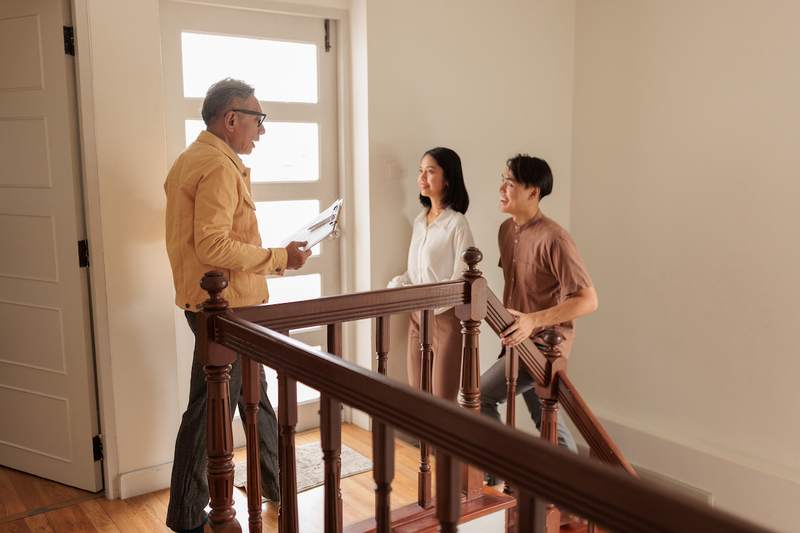Loft apartments are large, open living spaces typically found in urban buildings that often have been converted from other uses. Lofts usually have few or no walls, high ceilings, exposed brick, and a charm that appeals to history buffs and artists.
If you’re thinking about buying a loft, it’s a good idea to consider the benefits and drawbacks of loft living before you sign on the dotted line.
Key Takeaways:
- A loft apartment can be an old warehouse converted into living spaces, or built by developers that offer open spaces.
- It’s possible to buy a loft apartment, though they tend to be located in urban areas.
- While loft apartments offer unique features, some downsides include noise and a lack of privacy from others living with you.
Can You Buy a Loft Apartment?
It’s possible to buy a loft apartment. While lofts traditionally were converted from former warehouses and industrial spaces in urban areas, their popularity has inspired more builders and developers to create loft-style apartments in more locations.
“Lofts offer unique charm and can be purchased like any other residential property,” says Alex Platt, principal agent with The Platt Group at Compass in Boca Raton, Florida. “Overall, lofts are a great option for those who appreciate the unique charm, urban living, and expansive spaces.”
History of Loft Apartments
Loft apartments first became popular in New York City. Artists started moving into buildings in areas such as SoHo that had been abandoned by manufacturers and other businesses. As the years went on, developers saw the potential in converting such buildings into loft apartments.
In other urban areas, loft apartments were converted from former schools, storage facilities, and supermarkets.
In the 1970s, loft apartments became trendy, and evolved into the aesthetics we see in lofts today.
Types of Loft Apartments
It’s good to know the different types of loft apartments, including buildings converted into lofts, and apartments that have loft spaces.
Hard lofts
A hard loft is typically an old warehouse that has been converted into apartments. It usually has exposed brick, ductwork, support beams, and other features that date back to when the building was constructed.
Since these tend to be older buildings, hard lofts often are drafty spaces or aren’t as well insulated as more modern buildings. As former warehouses, they may look more basic or utilitarian compared to other types of lofts.
Soft lofts
Soft lofts are built by developers specifically as loft-style living spaces that try to be in line with historical buildings or features found in hard lofts. They may have high ceilings and large windows like a hard loft, but the building also may include amenities such as a fitness center or swimming pool.
Live-work lofts
Live-work lofts include both a residential area and a commercial area. For instance, a business may be located on the lower floor, with a loft living space on the floors above. Alternately, you may live in one unit but also run an online business there. Essentially, you live and work in the same building.
Characteristics of Loft Apartments
Loft apartments are characterized by high ceilings, exposed brick walls, and an open layout that often lets you see the entire living space at once.
“One of the unique features of lofts is vertical staircases that lead to open living spaces, which provide extra space for homeowners to utilize every inch of available space,” Platt says.
Even though other types of apartments may have one room, lofts are generally larger and have higher ceilings. Some, like Platt mentions, may have additional space that takes advantage of the high ceilings.
Depending on the type of loft you buy, you also may have historical features such as old ductwork, brass fittings, and large wrought-iron windows.
Loft apartments vs. standard apartments
Lofts are generally larger and more expansive than standard apartments. Other differences include:
Differences Between Loft Apartments and Standard Apartments
| Loft Apartments | Standard Apartments |
| Open layout. | Can have an open layout or closed-off spaces. |
| Tall ceiling. | Standard ceiling height. |
| May feature historical architectural elements. | Might not have historical elements. |
| May be used for both commercial and residential purposes. | Built for residential use. |
How To Buy a Loft Apartment
Purchasing a loft apartment is similar to purchasing any other type of home.
It’s possible to buy a loft apartment by yourself if you go through a developer, but if it’s your first time purchasing a home, you may be better off hiring a real estate agent, Platt says. That way, you can rely on their expertise about the neighborhood and any amenities that you may want nearby.
Plus, if you decide that a loft apartment isn’t for you, then your real estate agent can also point you to other types of housing.
How to find loft apartments for sale
You can find loft apartments for sale by searching online. If you want to live in an urban area, you may be able to find developers that are converting older buildings into apartments.
Otherwise, you can seek out a real estate agent who is knowledgeable about your area and loft apartments. Ideally, this professional knows of any up-and-coming properties or has helped others buy or sell loft apartments.
How does buying a loft differ from other home types?
Buying a loft is similar to buying a home of any type. You typically need to make an offer, and the seller needs to accept it before you can proceed with choosing a mortgage lender, submitting a mortgage application, making a down payment, and paying closing costs.
One difference may be in the home inspection. With a loft, you’ll likely own only the interior space you’re buying — similar to a condominium. The exterior likely will be maintained by a homeowners association. While an interior inspection may be sufficient for you, adding an inspection of the exterior to your offer may help you better gauge the overall condition of the building.
Pros and Cons of Buying a Loft Apartment
One of the biggest benefits is the unusual features you can get with a loft. Between the exposed pipes, wrought-iron windows, and exposed brick walls, those who want a home may find one with lofts. It may also be a great fit for those who love urban areas, since lofts tend to be located in these areas.
Lofts also offer a more expansive environment and opportunities to use the space as you wish.
“Lofts may also have vertical staircases that lead to open living spaces, which provide extra space for homeowners to utilize every inch of available space,” Platt says.
However, Platt mentions that lofts can be noisier than other styles of housing because there may not be insulation between units. Combined with brick walls and hardwood flooring that are typical in lofts, you may be able to hear your neighbors more, or have echoes in your apartment.
“Buyers also need to be open to having less privacy,” Platt says. “A loft is a more open concept than a typical condo, and sometimes lofts don’t have closed bedrooms and rely more on dividers than doors.”
Advantages and Disadvantages of Loft Apartments
| Pros | Cons |
| Unique features. | Could be noisier than other types of housing. |
| Good for people who want to live in an urban area. | Less privacy. |
| Open living space. |
FAQ: What Is a Loft Apartment?
Here are answers to some frequently asked questions about loft apartments.
Loft apartments may be noisy because of the open spaces and the materials of the wall and flooring.
The listing price of loft apartments will vary depending on factors such as your location, the size of the property, amenities, and whether it’s part of a historical building. If you purchase a loft apartment with amenities, you may have to pay HOA fees for the upkeep.
The Bottom Line on Loft Apartments
A loft apartment can be a great fit for people who want an open living space in an urban environment. While purchasing this type of property is similar to buying other types of homes, it’s important to ensure you understand how the homebuying process works. This includes the type of financing you need, how a home inspection works for loft apartments, and whether you’re well suited to loft living.
More From LowerMyBills:
- What Credit Score Do You Need To Buy a House?
- Frequently Asked Questions About Mortgages — Answered
- What You Need To Know Before Buying a Tiny House
- What Is a Gated Community? Pros and Cons of Living In One
- How Long Does It Take To Close On a House?
- What Is a Purchase and Sale Agreement?






